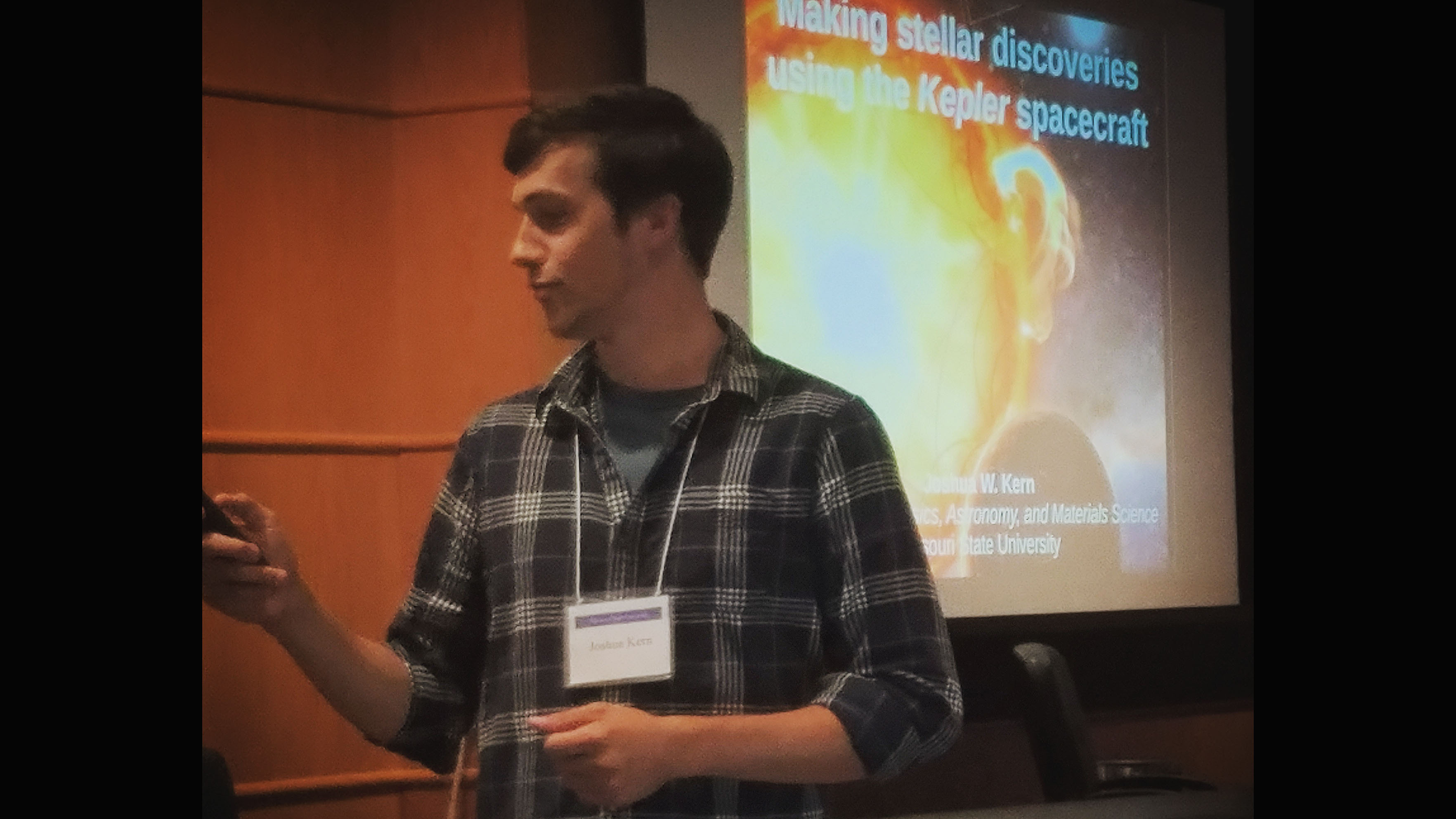We’ve walked on the moon. We’ve discovered new planets. However, one thing that is difficult to understand are the insides of stars.
When we look at stars with telescopes, we only see the outer layers. At Missouri State University, we’ve been lucky to look at stars with one of the most influential telescopes ever made: the Kepler space telescope.
Though it’s not as easy as getting up close, the PAMS department has their ways of “seeing” into the stars thanks to Kepler.
“Just like geologists use earthquakes and seismology to determine the internal structure of the Earth, astrophysicists use stellar pulsations and asteroseismology to determine the internal structure of stars,” said Josh Kern, a graduate student working with Dr. Mike Reed, professor of astronomy.
Kern analyzed these pulsations and made several new discoveries.
What he found
Kern was able to make some exciting and unexpected discoveries. They include information about the internal structure, like chemical composition changes that reflect pulsations in the core of a star. He also learned about the macroscopic properties, including how fast the star spins and that we are looking at its equator and not its poles.
One of the discoveries was something he and Reed had never seen before.
Kern says this means they may have discovered new physics.
Why this is important
Understanding stars is a process; theoreticians make models of the stars and Kern has to go look for those traits. With his new discovery, he gives information to the theoreticians, and they construct models based on his information.
Kern says the anticipation of the discovery is what he enjoys most.
“Knowing that I am only one of maybe a few dozen people in the world who will ever look at this star is an exciting experience,” Kern said.
Kern recently had his article, “Asteroseismic analysis of the pulsating subdwarf B star KIC 11558725: an sdB+WD system with divergent frequency multiplets and mode trapping observed by Kepler” published.
These results were presented by Reed at the Meeting on Hot Subdwarfs and Compact Objects in Krakow, Poland, July 2017. Kern also presented these findings in January 2018 at the 231st American Astronomical Society meeting in Washington, D.C.
“Without Dr. Reed, none of my work would have been possible,” Kern said.

